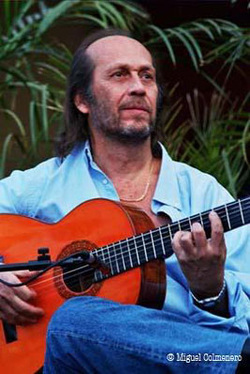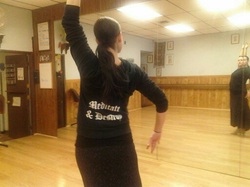
One of the beautiful things about Paco as a person, was that he chose to honor his mother by choosing the stage name, de Lucia. He was born, Francisco Sanchez Gomez, in 1947. His mother was Lucia Gomez and his father was Antonio Sanchez, a laborer and a guitarist himself. If you want a more detailed biography of Paco, please visit his website: www.pacodelucia.com
What can I say about Paco? He was a virtuoso, but his playing went beyond technique. It was amazing technique perfectly fused with soul. This combination, and his willingness to explore new terrain, while staying true to his Flamenco roots, were what enabled him to take Flamenco to the world. He has given so much to the world of music, though his collaborations with international artists, and he is also credited with bringing the world back to Flamenco. One of the biggest examples of this is when he and his Brazilian percussionist, Rubem Dantas, brought back and adapted the Peruvian cajon to Flamenco. This box-like drum is now a fixture in most Flamenco shows, so much so, that newbies are always surprised when they find out how recently it was introduced into our art form.
For me personally, because I love cante so much, some of his greatest collaborations were with the legendary singer, Camaron de la Isla. Together they brought Flamenco to new heights and to the world, including me. I am forever grateful.
Paco passed away from a heart attack last month, on February 26th, 2014. His heart stopped and the hearts of all other Flamencos broke that day.
We will miss him greatly, but his music lives on. Below are some clips for you to enjoy. Have a beautiful day, surrounded in music.

 RSS Feed
RSS Feed
